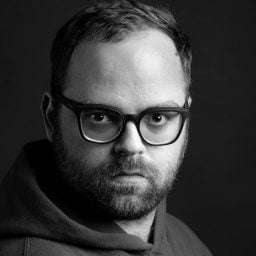Pop Culture
Eden Espinosa, Star of ‘Lempicka,’ on Bringing the Art Deco Darling to Broadway
Now running on Broadway, the musical fictionalizes the storied life of the 1920s painter.
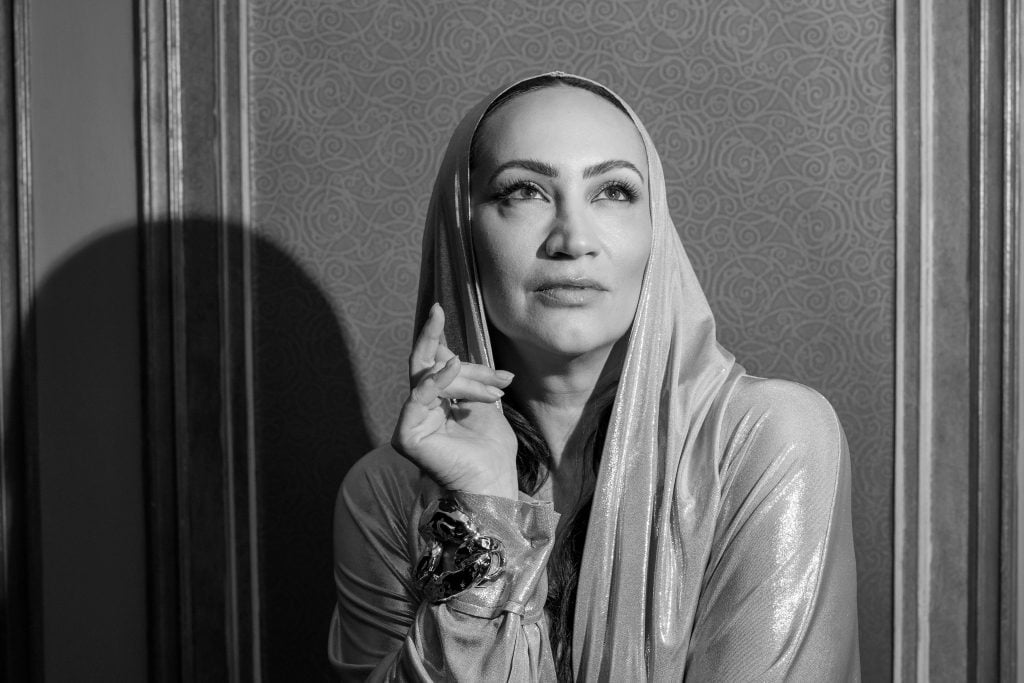
Eden Espinosa, who stars as Tamara de Lempicka in the new Broadway musical about the artist, has been tied to the role for nearly a decade as it worked its way from conception to the stage of the Longacre Theater on Broadway. “Every time I’ve come back to this show,” she told me, “I’m a different person.”
Simply titled Lempicka, the production fictionalizes the storied life of the celebrated Art Deco painter. Born in Warsaw, Poland, in 1898, Lempicka survived the Russian Revolution and relocated to Paris, where her bold, stylized portraits of society figures gained her fame and clientele amid the cultural elite of the 1920s and 1930s.
The first production of the show opened at the Williamstown Theater Festival in 2018 and was supposed to go to San Diego in early 2020 before the pandemic happened. (It ultimately opened at the La Jolla Playhouse in 2022.) Each time, Espinosa said she learns more about herself that is different and what she can bring to the role.
“I feel like this time, digging into the dirt of this text and score, I am really tapped into that hunger and that drive [that Lempicka had],” she said.
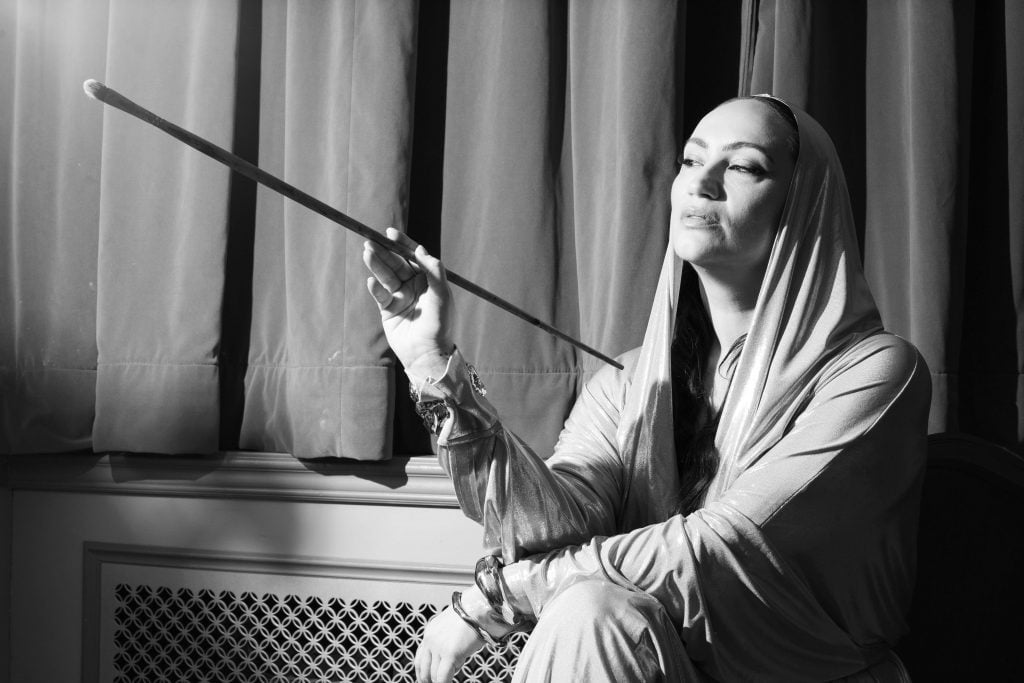
Eden Espinosa. Photo: Adam Schrader.
Though their names will now be forever entwined, Espinosa said she didn’t know of Lempicka when she first became involved with the project. Her lack of familiarity with the artist is no fault of her own. The painter’s legacy was nearly lost to obscurity. Despite success in Paris, the Jewish artist was forced to flee at the breakout of World War II and fell victim to changing art trends after the war. Lempicka’s work was only rediscovered again in the 1970s, following an Art Deco resurgence. Even then, her legacy had to compete with those of famous male artists of the era.
This is exactly why playwright Carson Kreitzer first developed the show’s original concept. Kreitzer, in a press preview last month, recalled seeing a Taschen book of Lempicka’s work at a Chicago bookstore and realized she knew many of her paintings. “But I didn’t know her name and I didn’t know anything about her incredible life. I was instantly hooked,” Kreitzer said. “This is exactly the kind of woman I have spent my life writing about—this powerful, iconic class of women who have been written out of history.”
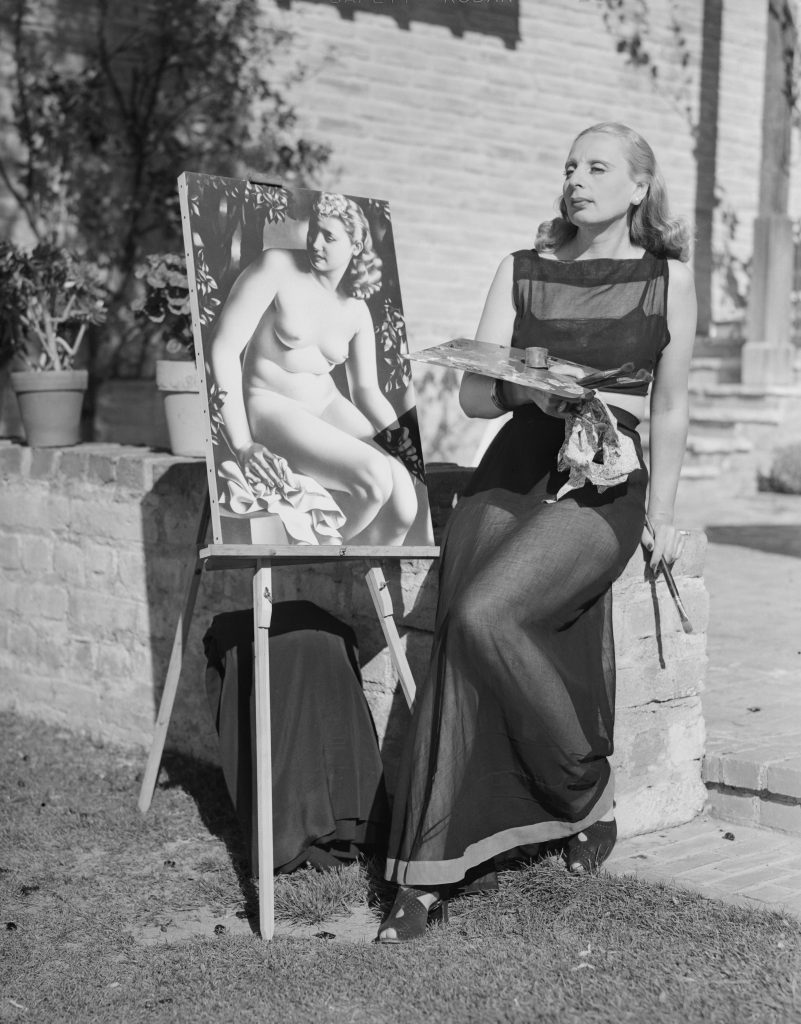
The real Tamara de Lempicka is pictured at her easel. Photo: Bettmann/Getty Images.
Kreitzer, who went on to write the book with composer Matt Gould, called Lempicka a bisexual woman of “great vision and appetite” and “the kind of appetites that seem monstrous in a woman.” Espinosa, who made her name as Elphaba in Wicked, was quickly tied to the eponymous role.
“Before, I was worried about people not connecting to her and not liking her. As a woman, that’s labeled as difficult or too much, or you’re not supposed to want at all. And she does,” Espinosa said.
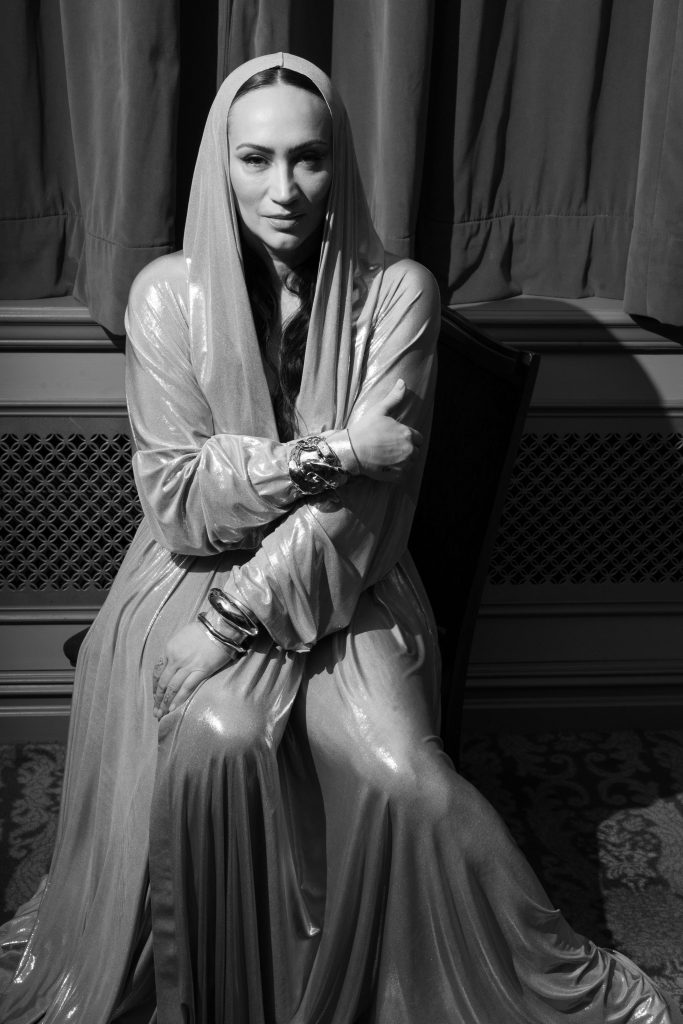
Eden Espinosa. Photo: Adam Schrader.
Over the past decade, Espinosa has cracked open many a Lempicka biography in gearing up for the role—and they were surprisingly less helpful than she thought they would be. She pointed out how the artist once painted herself driving a green Bugatti despite never owning the luxury car, a move Espinosa branded as “aspirational.” And the actor questioned the motivation for the flashy jewelry Lempicka was known to wear, likening it to wearable currency the artist could use if she needed. To Lempicka, truth and identity were malleable, tools with which to brand herself.
“Tamara always had versions of truth, from where she was born, if she was Jewish or not, who she loved and who she didn’t,” Espinosa said. “That’s by design. It was part of the art of survival for her. What she needed to do to survive, politically and what was going on in the world, but also to survive being a woman in the art world.”
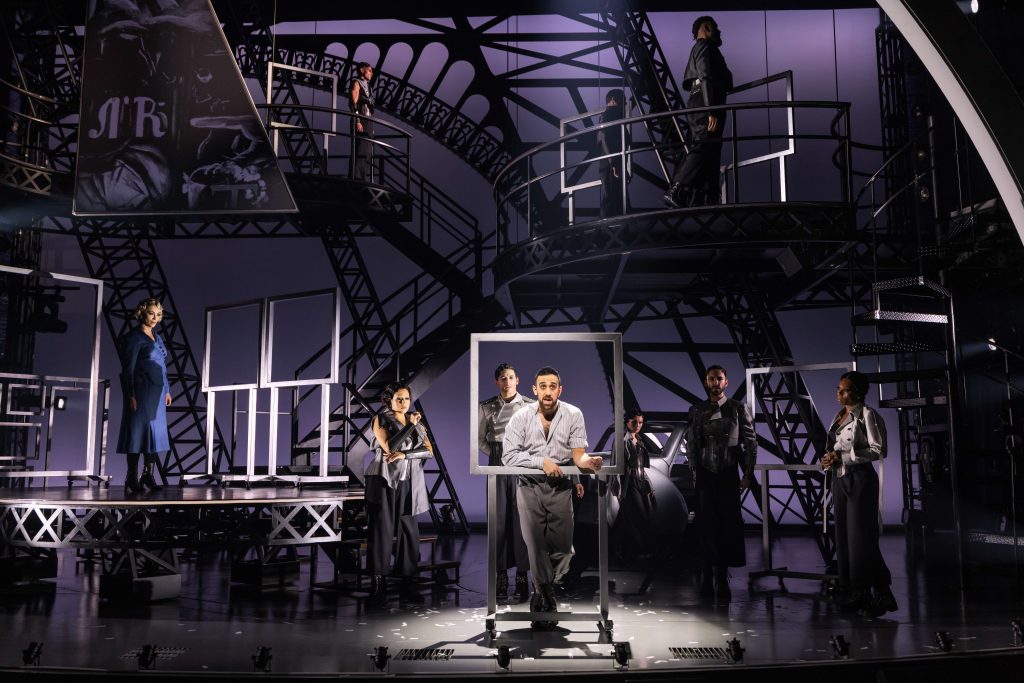
George Abud as Filippo Tommaso Marinetti in Lempicka. Photo: Matthew Murphy and Evan Zimmerman.
The show spans decades of Lempicka’s tumultuous life and surfaces themes that remain poignant to modern audiences. For example, simply by the nature of Lempicka’s identity, it resonates amid Russia’s war in Ukraine. (In the playbill, at least one cast member, George Abud, directly draws attention to the humanitarian suffering in Gaza.) The artist’s queerness is also centered, as the fictional Lempicka finds herself wrapped up in a love triangle with her husband and another woman. Even Lempicka’s humor and sarcasm, the actor said, comes through by curtain call.
“Every iteration we’ve done over the years, it has resonated,” Espinosa said. “It’s even more so now, with what has happened in our country with women’s rights and LGBT rights. People now, more than ever, feel agency over their voices, over having an impact on things.”
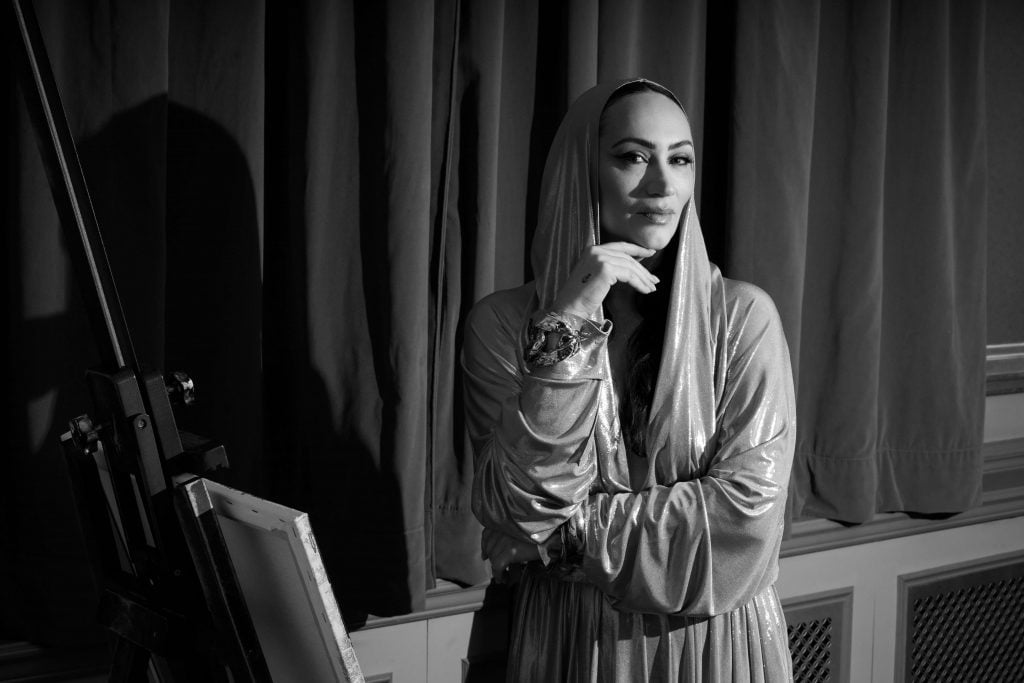
Eden Espinosa. Photo: Adam Schrader.
While the musical has fictionalized many aspects of the artist’s life, Espinosa nonetheless insisted on capturing Lempicka’s “essence” and examining what was going on in her mind “to make her feel like she needed to navigate the truth in the way that she did.” No video or audio clips of Lempicka survive, which means the actor’s own personality and “silliness” occasionally poke through her line delivery.
Still, Espinosa and choreographer Raja Feather Kelly took inspiration from the way Lempicka posed her subjects, mirroring her contrapposto in the actor’s own onstage stance. “Your leg is beveled a little bit, so there’s a lot of angular lines that she has in her painting that I try to adopt in my poses and in my posture,” she said.
And the production did have access to a key source with ties to Lempicka: her great-granddaughter, Marisa, one of the guardians of the artist’s estate. “When I first met Marisa, she told me, ‘You have her spirit. You have her spirit,’” Espinosa recalled.
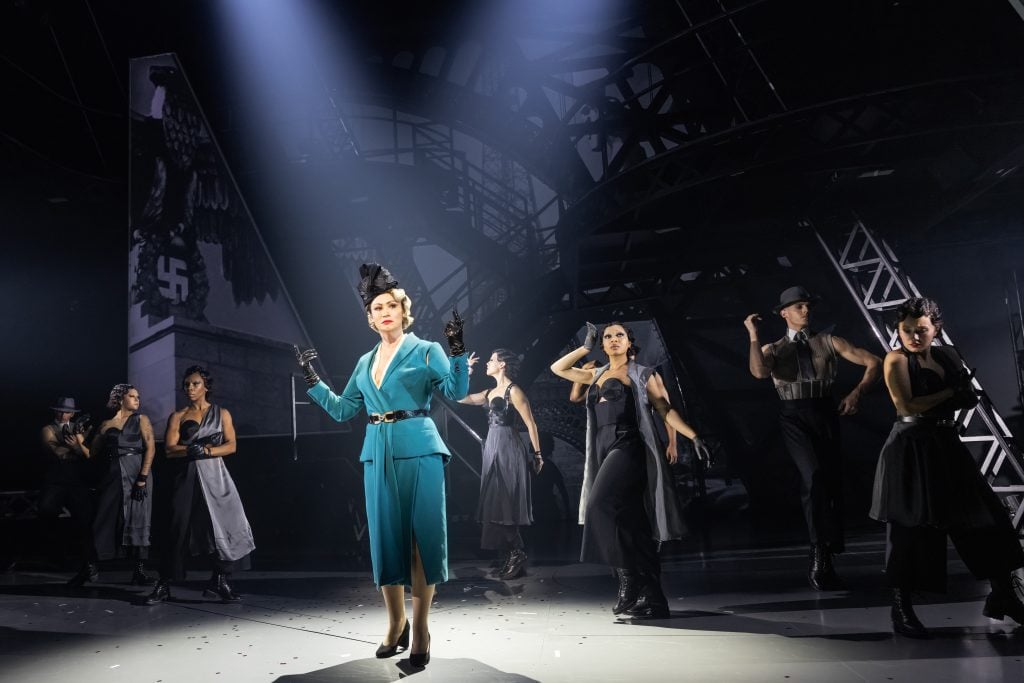
Eden Espinosa and the cast of Lempicka. Photo: Matthew Murphy and Evan Zimmerman
Lempicka opens as the Art Deco star is having a moment—what Espinosa called “crazy synergy” around the artist’s legacy. She’s receiving her first major U.S. retrospective in the fall, a selling exhibition is currently ongoing at Sotheby’s, and an independent documentary is in the works. Espinosa is honored to be a part of it all.
“I love it,” Espinosa said of Lempicka’s art. She appreciates how Lempicka references the Renaissance, but mixes it with Futurism and Cubism to make it her own. “I love how the curls of the hair look mechanical in a way—but soft. I love how she does the colors, how deep and rich they are, but also the skin.”
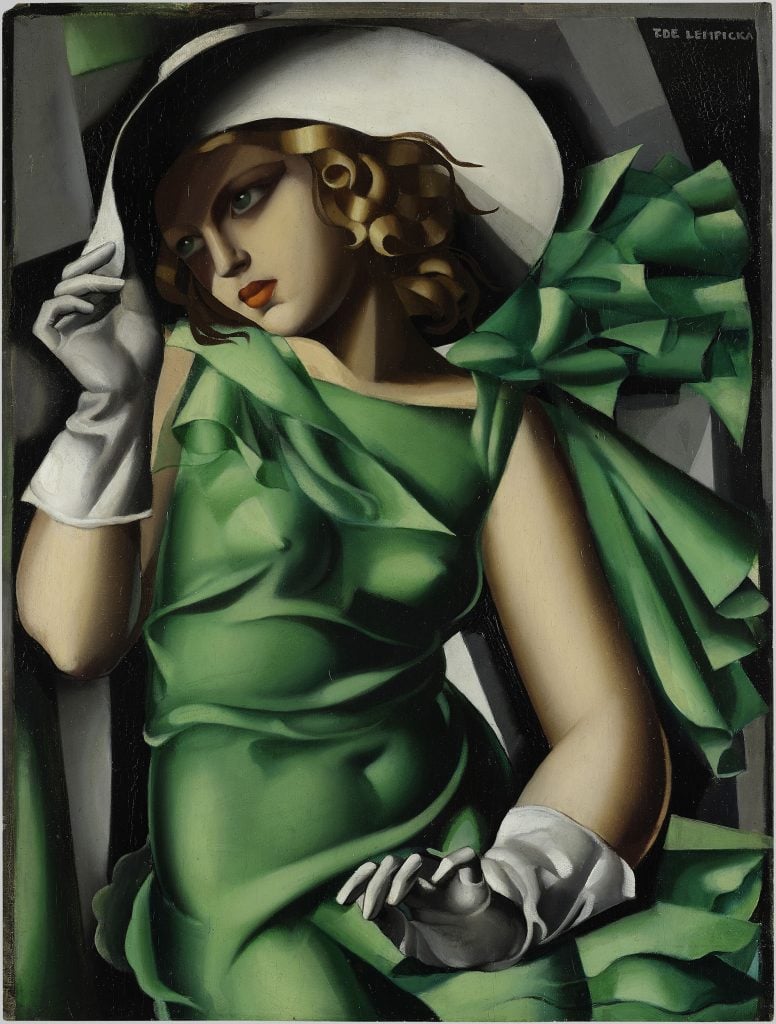
Tamara de Lempicka, Young Woman in Green (1927–30). Centre Pompidou, Paris, purchase, 1932, inv. JP557P. © 2023 Tamara de Lempicka Estate, LLC / ADAGP, Paris / ARS, NY.
Inhabiting Lempicka has also taught her lessons, she said. “Women are conditioned to sometimes be small and apologize for themselves or apologize for their ambition or their hunger or their gifts. She is just teaching me not to do that,” she explained.
Espinosa admits there are aspects of Lempicka’s life that she can’t relate to, such as the artist’s difficult relationship with her daughter, Kizette. As a young child, Kizette was instructed to call her mother “mon cherie” because Lempicka did not want it known that she had a child. “I don’t have children of my own. I’m not a mother. But… the relationship with her daughter is hard to swallow at times,” Espinosa said.
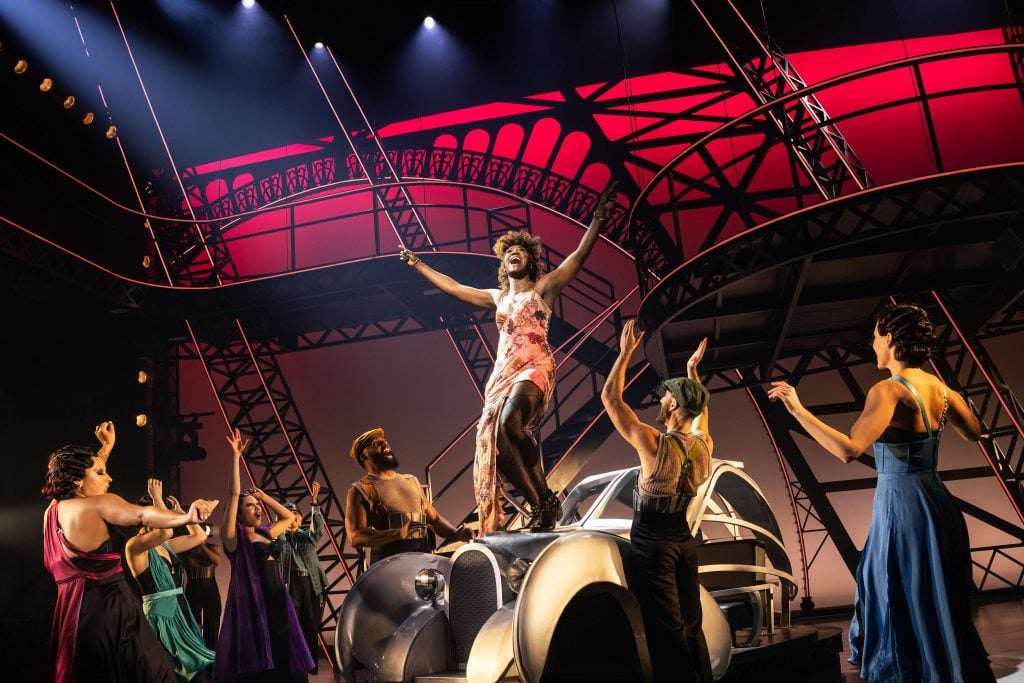
Amber Iman as Rafaela in Lempicka. Photo: Matthew Murphy and Evan Zimmerman.
Still, she particularly enjoys playing older Lempicka. In the weeks since the show first opened, the script has been adjusted to include new scenes of the artist as an older woman at the beginning of the musical. It’s not lost on the actor that a “role this rich” doesn’t come along everyday for a “middle-aged” artist.
“To be a part of this show is thrilling. We are all exhausted beyond comprehension, but we just love the ride,” she said. “I don’t take it for granted.”
Lempicka is now running at the Longacre Theatre, 220 W 48th St, New York.

